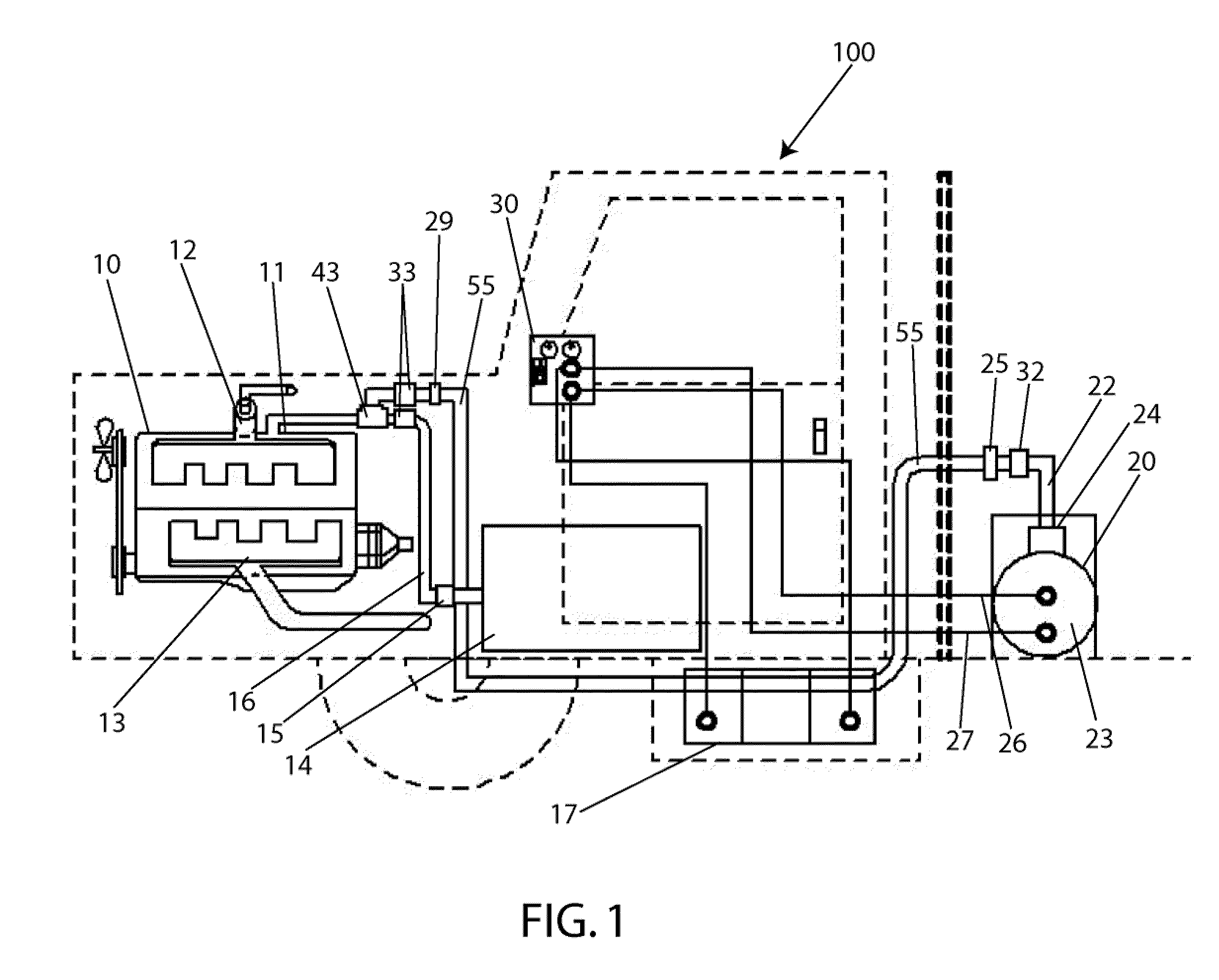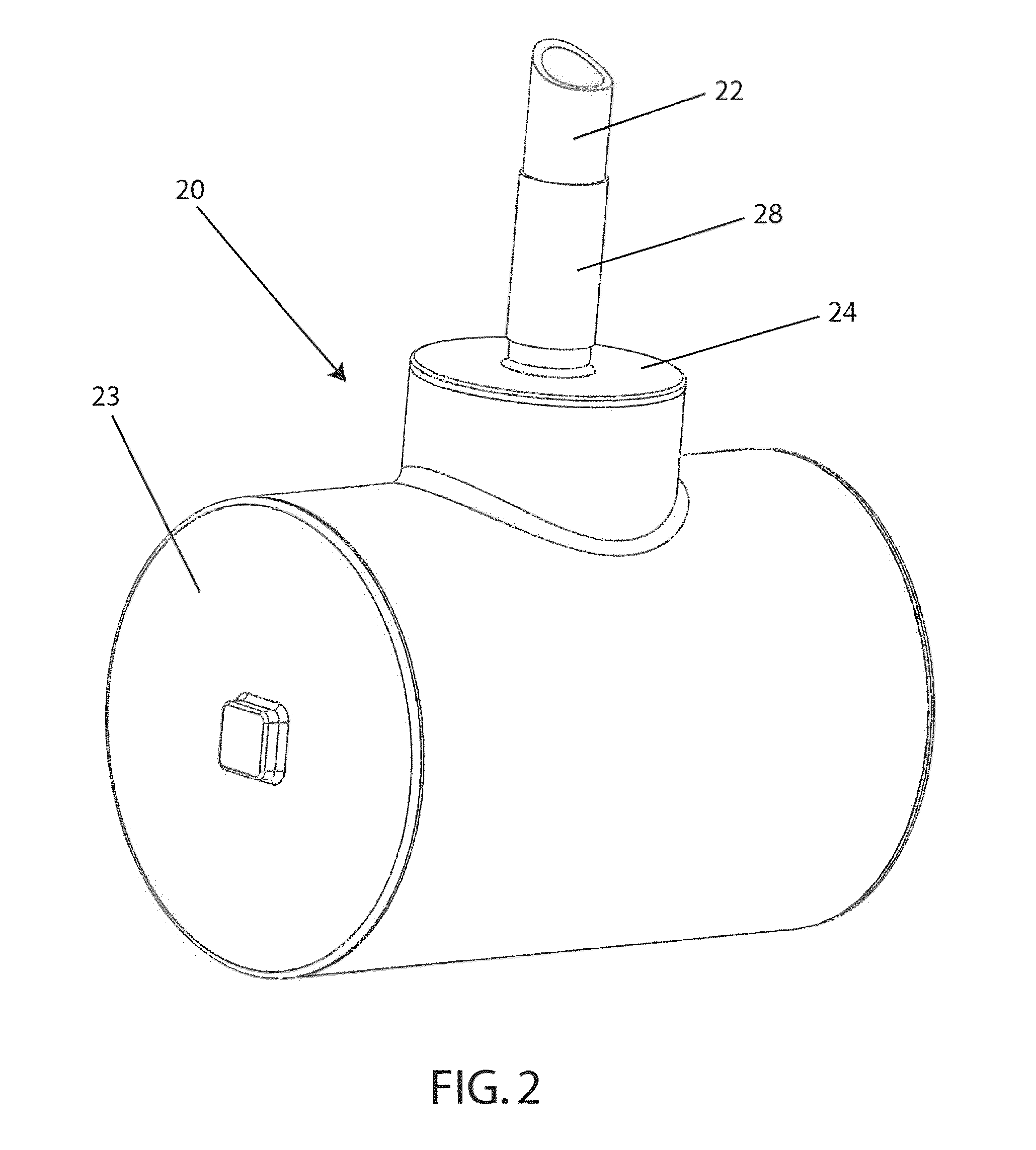Hydrolysis system to produce hydrogen-oxygen gas as a fuel additive for internal combustion engines
a hydrogen-oxygen gas and internal combustion engine technology, applied in the direction of non-fuel substance addition to fuel, machines/engines, mechanical equipment, etc., can solve the problems of reaching the limit of present design capabilities without yielding a consumer-acceptable product, generating toxic emissions such as carbon monoxide, nitrous oxide, sulfur dioxide, etc., to improve combustion efficiency, reduce internal combustion toxic emissions, and simple operation
- Summary
- Abstract
- Description
- Claims
- Application Information
AI Technical Summary
Benefits of technology
Problems solved by technology
Method used
Image
Examples
Embodiment Construction
[0039]Reference will now be made to the drawings in which various elements of the present invention will be given numerical designations and in which the invention will be discussed so as to enable one skilled in the art to make and use the invention.
[0040]The present invention comprises an electrolysis system that generates and delivers hydrogen gas and oxygen gas to an internal combustion engine. Electrolysis is a well known process whereby an electrical current is passed through a water-based electrolyte solution. The electrical current splits the water molecules in the solution releasing hydrogen gas and oxygen gas. In the present invention, the hydrogen gas and oxygen gas are pressurized before being injected into the fuel line of an internal combustion engine to enhance its performance while reducing the emissions of toxic substances.
[0041]Application of the present invention is within vehicles that are powered by an internal combustion engine. This invention may be used with ...
PUM
| Property | Measurement | Unit |
|---|---|---|
| thick | aaaaa | aaaaa |
| thick | aaaaa | aaaaa |
| pressure | aaaaa | aaaaa |
Abstract
Description
Claims
Application Information
 Login to View More
Login to View More - R&D
- Intellectual Property
- Life Sciences
- Materials
- Tech Scout
- Unparalleled Data Quality
- Higher Quality Content
- 60% Fewer Hallucinations
Browse by: Latest US Patents, China's latest patents, Technical Efficacy Thesaurus, Application Domain, Technology Topic, Popular Technical Reports.
© 2025 PatSnap. All rights reserved.Legal|Privacy policy|Modern Slavery Act Transparency Statement|Sitemap|About US| Contact US: help@patsnap.com



